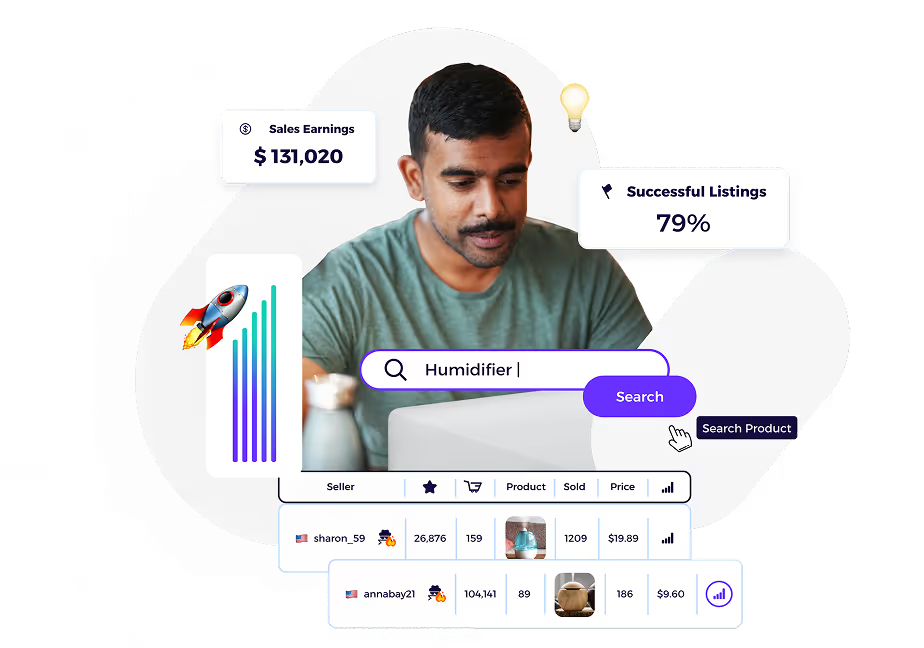
Featured on





See what top dropshippers are testing: live Facebook/Instagram creatives, top-selling Shopify and eBay listings, and verified supplier matches. Use filters to narrow by niche, audience, and price to build a prioritized testing list.
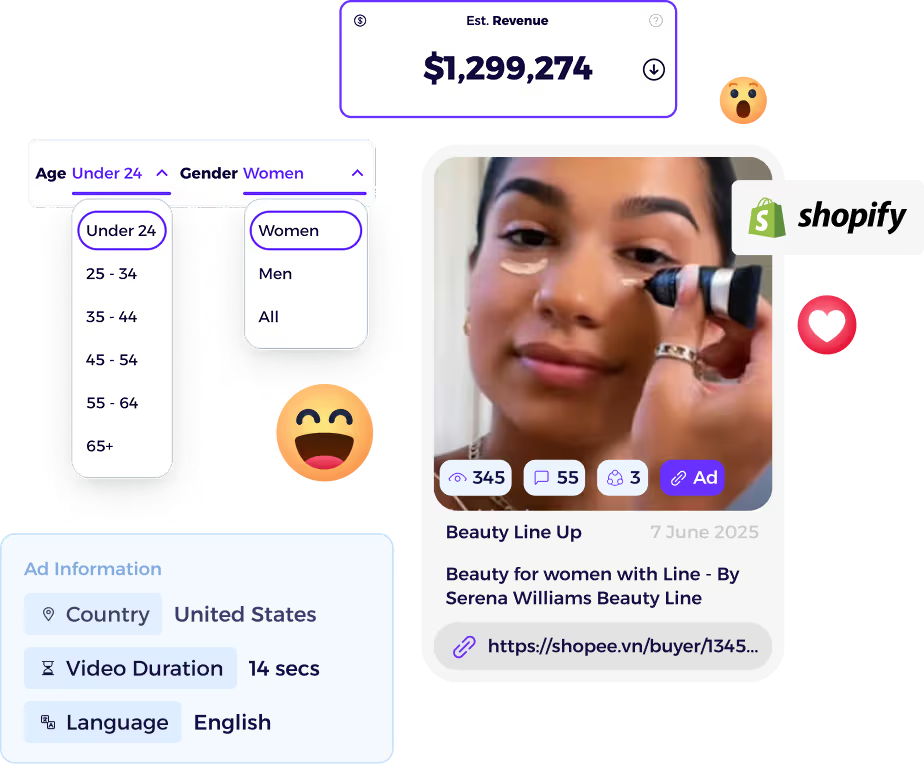






Leverage AdSpy, Store Tracking, Competitor Best-Seller Insights, and a 100M+ product database to quickly validate ideas, find suppliers, and scale profitable dropshipping tests confidently.
Scan live and historical Facebook and Instagram ads from competitors, see creatives and copy, compare spend and engagement metrics, filter by date, country, and niche, and capture landing pages to iterate faster and out-ad rivals.

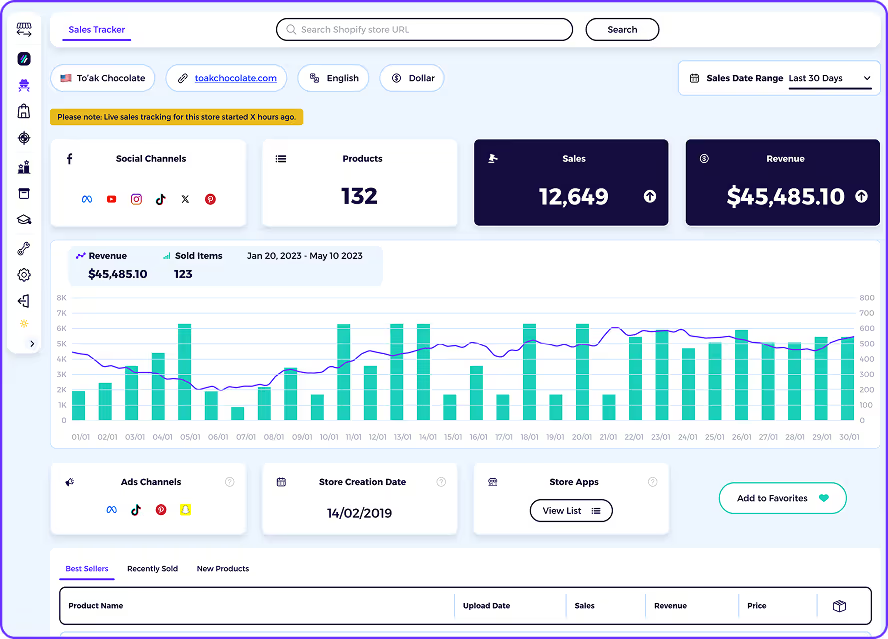
Track public Shopify stores to spot new product launches, best sellers, and revenue trends. Use store-level signals and product activity to validate ideas, find supplier match candidates, and prioritize items worth running ads for.
Enter any eBay seller and surface high-potential listings, sales velocity, pricing trends, and sell-through signals. Use these insights to identify repeatable dropshipping winners, estimate margin potential, and prioritize which products to source and test.
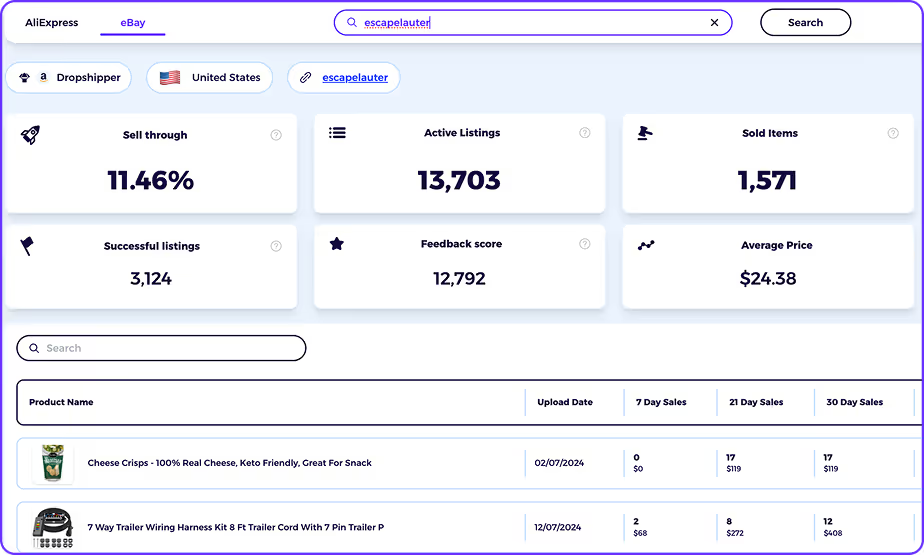

Search a catalog of over 100 million live products and cross-reference data from 20 million active stores, 350,000+ verified dropshippers, and millions of real ads to validate demand, find suppliers, and shortlist testable dropshipping products.
Quickly surface the highest-performing products competitors sell across eBay, Shopify, and other marketplaces. See estimated sales and revenue, price and listing history, and launch cadence — use those signals to shortlist testable dropshipping winners fast.
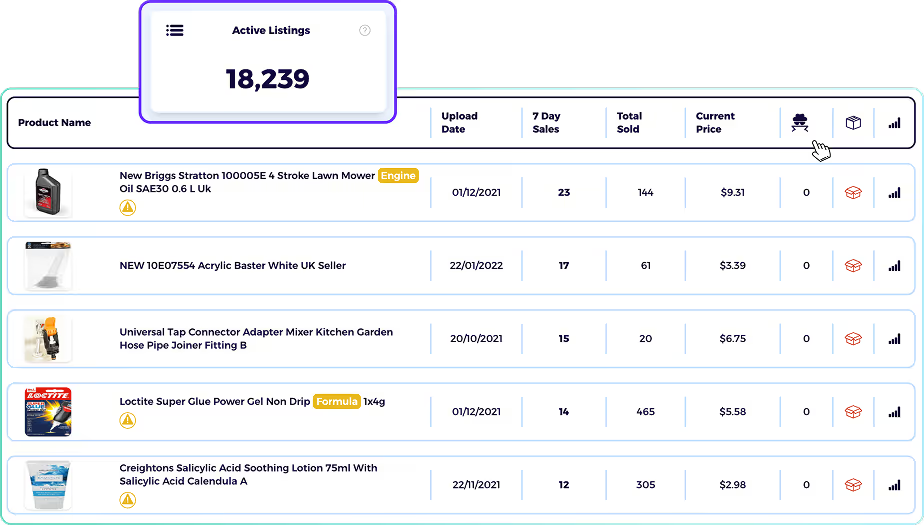
Turn market signals into validated product ideas, reliable supplier matches, and proven ad creatives—shorten research cycles, reduce risk, and scale winning tests faster and smarter.
Rapidly test demand using live ads, sales velocity, and cross-store signals before committing ad spend.
Search verified dropshippers, supplier ratings, and shipping signals to pick partners who consistently fulfill orders.
Browse viral Facebook and Instagram creatives, copy hooks, and adapt proven formats for product tests.
See top-selling SKUs across marketplaces, monitor price changes, and shortlist proven winners for dropship testing.
Use revenue estimates, fees, and competitor prices to calculate margins and set profitable pricing strategies.
Turn validated winners into repeatable funnels with supplier integrations, automated monitoring, and conversion-focused optimization tools.
Customer experience isn't just important to us - it's everything. Check out some of these public reviews from around the web.
A dropshipping spy tool uncovers what other sellers are testing and selling—live ads, top-selling store products, and supplier signals—so you can spot high-probability products, copy winning creatives, and prioritize items to test without blind guesswork.
Yes, when used correctly. The tool speeds discovery by combining ad virality, store sales velocity, and demand signals. Winners still require testing, but spy tools cut research time and raise the probability of picking profitable candidates.
Estimates are directional, not exact. They’re based on public signals (listing frequency, visible sold counts, proxy traffic). Use them to compare products and prioritize tests, not as legal financial statements.
Generally yes, spying public ads and storefronts is legal. Avoid scraping protected content or violating terms of service for platforms; always follow copyright and data-use rules when downloading or reusing creative assets.
Ad Spies focus on creatives and media insights (what ads look like). Product Spies focus on listing performance and sales signals. The best dropshipping tools combine both for holistic validation.
Filter for recent, repeatable signals; verify supplier reliability; test with small budgets; adapt creatives rather than copy verbatim; and combine tool insights with A/B testing and conversion optimization for scaling.
It scrapes public ad networks and storefronts, indexes product and ad metadata, and surfaces filters (niche, country, price, engagement). You search keywords or paste a store URL to reveal creatives, sales signals, and supplier matches for rapid validation.
Most do. They capture live and historical creatives, landing pages, captions, and basic engagement metrics so you can analyze hooks, formats, and funnels used by successful dropshippers.
Yes—many tools cross-reference product listings with supplier databases (AliExpress, CJ, Alibaba, wholesalers) or maintain verified dropshipper directories to help you locate source options quickly.
Platforms rarely “ban” users for using third-party research tools, but scraping private or protected data may violate platform policies. Use tools that respect platform rules and only access publicly available ads and storefronts.
Combine signals: ad engagement and creative format, consistent sales velocity across stores, supplier availability, and acceptable shipping/margin. Shortlist products, run small ad tests, and iterate using live performance data.
Validate ideas with live ads and sales signals, shortlist supplier matches, and run small controlled tests to scale winners reliably.
